CLICK HERE TO GO TO: Upcycling Preserves Part 2: TOP TIPS
In a world where we’re constantly seeking ways to minimize waste and maximize flavour, the concept of upcycling preserves – be it shop-bought or homemade – is gaining momentum as a sustainable and scrumptious culinary trend. But what exactly does it entail, and how can it make a difference in our kitchens and beyond? In this captivating blog post, I delve into the fascinating option of upcycling preserves.
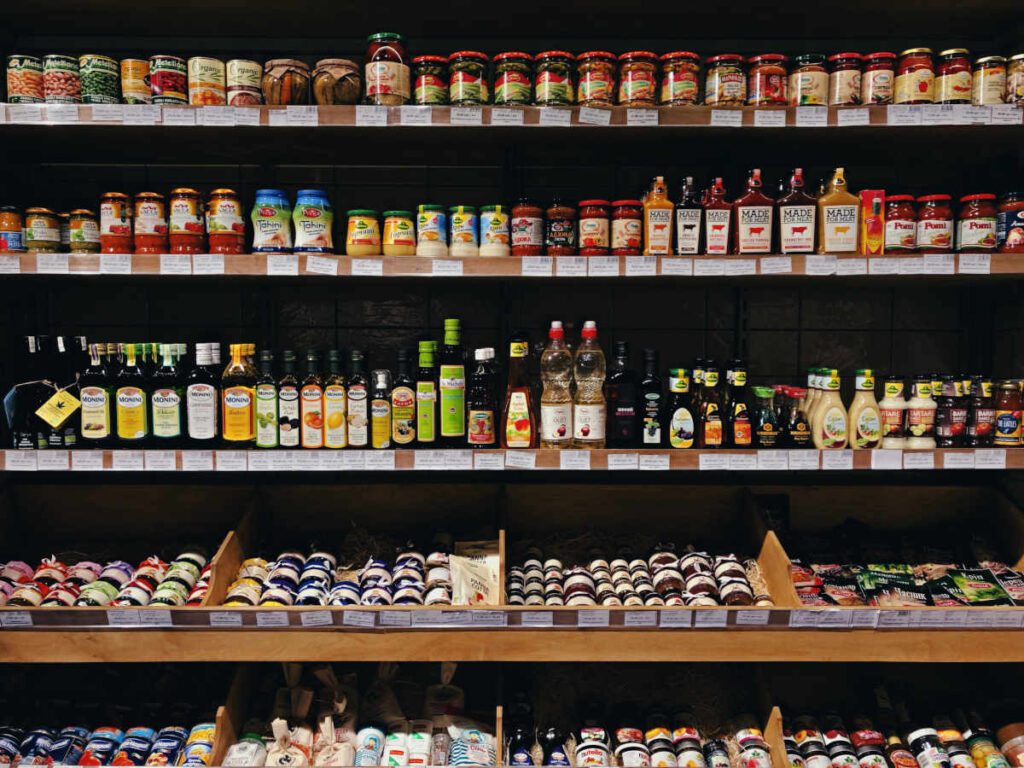
What is the ‘upcycling’ of preserves?
Upcycling preserves involves breathing new life into shop-bought (or some homemade) jams, chutneys, and pickles that often linger in our cupboards, transforming them into innovative and delectable creations. You may want/need to make a tasty preserve at short notice, when you are maybe short of time and money to buy all fresh ingredients, but still want to serve up something special.
By experimenting with flavours, textures, and combinations, you can not only reduce food waste but also unleash your culinary creativity, and discover exciting new recipes.
It can also be an easy way to road-test some preserving techniques, flavour and texture combinations ahead of applying them to a make-from-scratch preserve. This is surely a feature of preserving for modern living.
Why ‘Upcycle’ Preserves?
It can make the more of an otherwise uninspiring shop-bought chutney but also allows you to flex your creative muscles in the kitchen.
You’ll be amazed by how a simple tweak or two can elevate the flavours of an otherwise ordinary jar of chutney, turning it into a delectable treat that will impress your family and friends.
Improving and customizing the flavour:
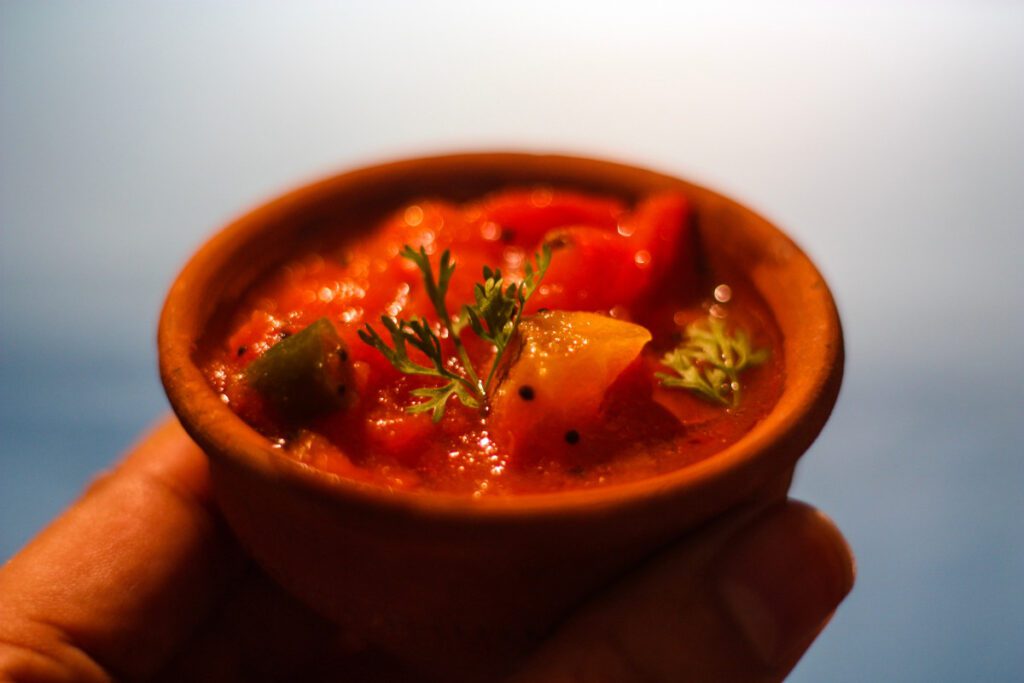
You can tailor its taste to your preferences.
Add spices, herbs, or other ingredients to enhance or modify the existing flavour profile, creating a unique and personalized condiment.
Time and effort-efficient upgrade:

When you need preserve to serve as part of a meal but are short on time and fresh ingredients, an upcycle can fill the gap.
With just a few additional ingredients and a little effort, you can elevate the taste and quality in no time at all.
Either enjoy immediately or allow some time for the flavours to develop and mellow and then it’s good to go!
Reducing Food Waste:
One of the most significant advantages of upcycling preserves is minimizing food waste.
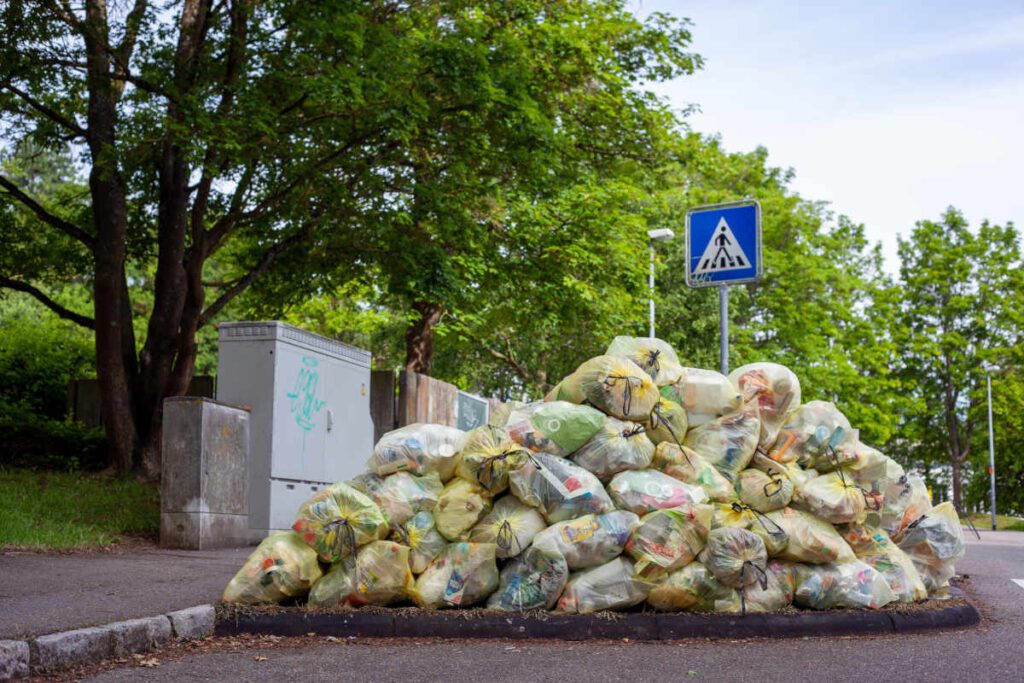
By finding creative ways to repurpose and reimagine the contents of those less-than-inspiring jars, you can ensure that every last bit is put to good use.
If you find a jar nearing its expiration date, transforming it into a new and delicious creation can prevent unnecessary waste. And encourage you to start using and enjoying it sooner rather than later.
This not only benefits the environment by reducing the strain on landfills but also contributes to a more sustainable lifestyle.
Saving Money:
Upcycling preserves allows you to make the most of your existing store-cupboard items, ultimately saving you money on groceries.
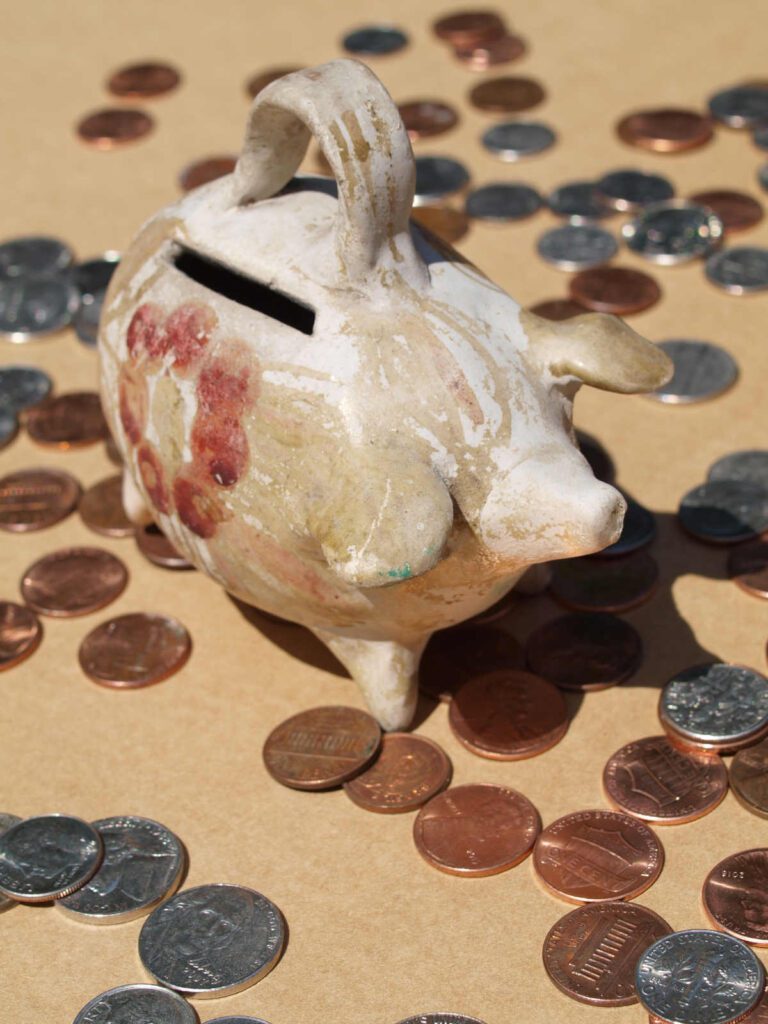
Instead of buying new ingredients or condiments, you can utilize what you already have to create innovative dishes and flavour combinations, thereby stretching your food budget further.
Also, if you have found a great deal on a preserve at the supermarket, upcycling it can be an affordable way to enjoy a more luxurious version without breaking the bank.
By adding a few inexpensive ingredients, you can create something that tastes like a high-end product for a fraction of the cost.
Expanding Cooking Creativity:
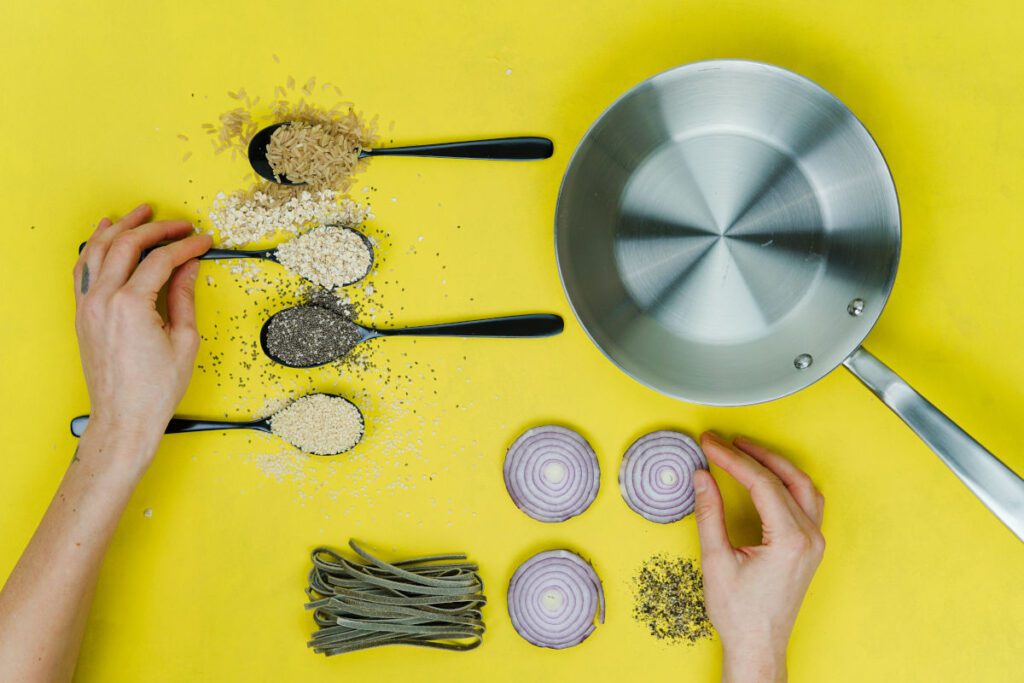
Upcycling preserves encourages you to think outside the box, experimenting with unexpected flavours and textures to create unique and delicious dishes. This process can help you develop your cooking skills and develop your palate, leading to an increased appreciation for diverse ingredients and techniques.
Promoting Resourcefulness:
The practice of upcycling preserves and fosters a sense of resourcefulness and self-sufficiency.

By learning how to make the most of what you have on hand, you become more adaptable and capable of working with limited resources.
This skill can be invaluable in various situations, from cooking on a tight budget to navigating unexpected challenges in the kitchen.
Gently develop and expand your food preservation skills:
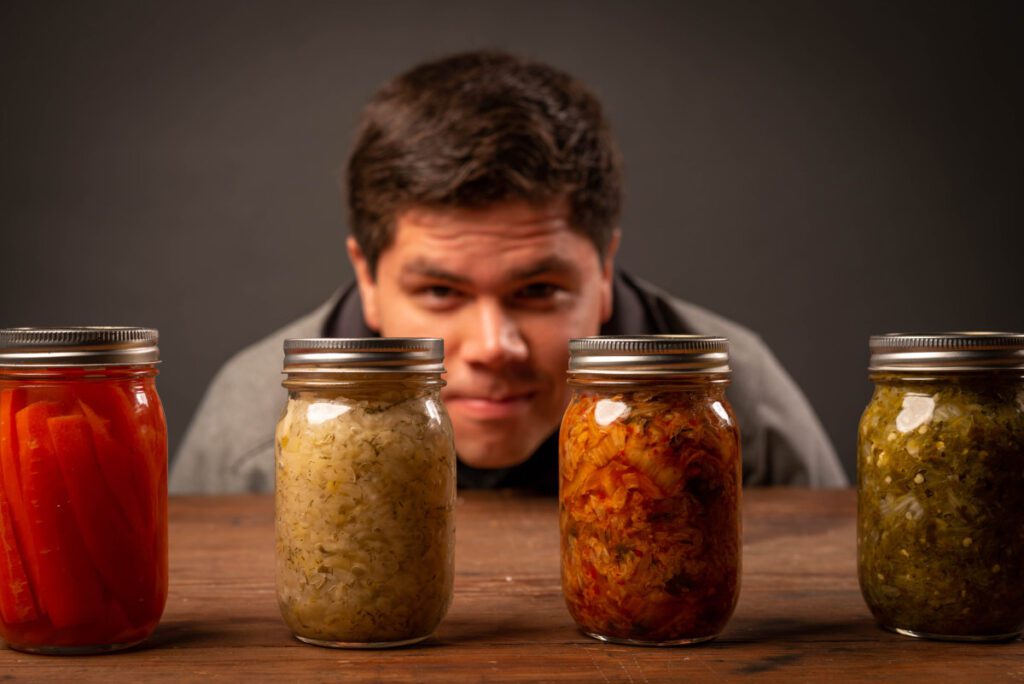
This is an excellent way to begin learning about, or testing, your food preservation techniques. And experimenting with different flavour combinations.
As you gain confidence and experience, you can progress to making your preserves from scratch, which remains the ideal way of creating the best-tasting, personalized preserves.
When the shop-bought version just does not meet your taste preferences AND/OR you need something good at short notice.

I tried upcycling like this for the first time when I needed some red onion chutney at short notice. Despite buying a couple of jars of good-quality chutney, when I tasted it, I was disappointed by the limited flavour dominated by sweetness.
So I took steps to improve this urgently – added more vinegar for piquancy, and dried onion flakes for more onion flavour, together with garlic, ginger, chilli and mustard seeds. By then it could rival my red onion chutney made from scratch, in both flavour and texture.
Get creative and experiment with a jar of plain preserves(bought or homemade)
So you have got a stored jar of your strawberry jam, which is great, but you want to serve up something a bit different.

So either add some chilli, pepper, mint, some balsamic vinegar, or some whiskey. Adding some vanilla makes this jam so luxurious it’s quite ridiculous! Incorporate the addition well, let it cool completely and serve. Store any leftovers in the fridge or freezer.
It is so easy and so effective! And if you don’t like the taste, you can try again with something else.
Create unique gifts:
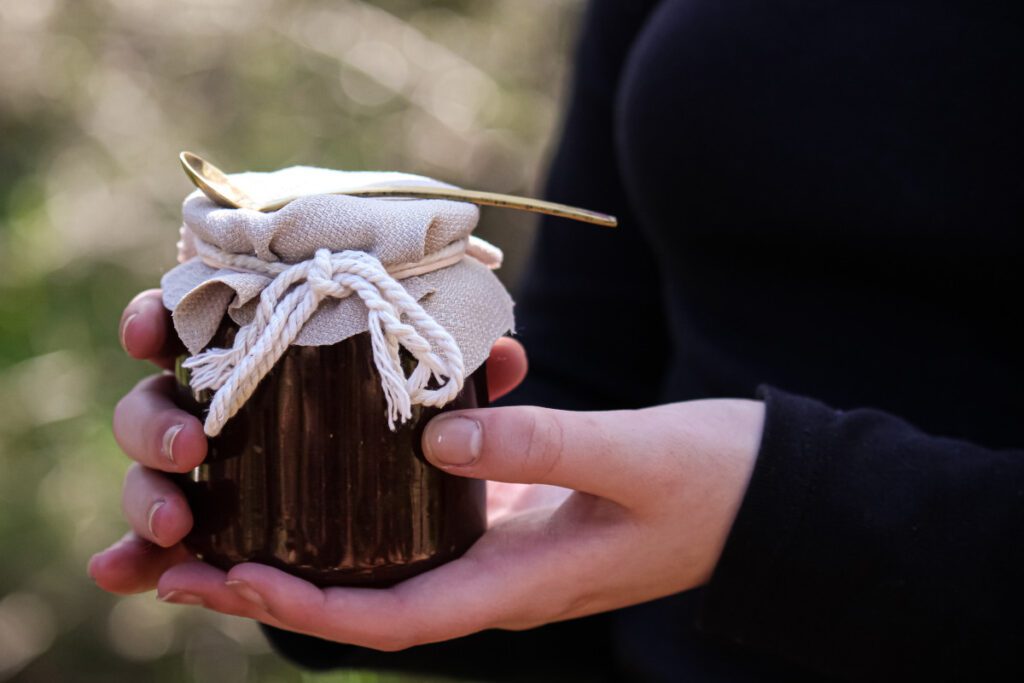
It is a way that you can surprise your loved ones with a customized condiment that they’ll be sure to enjoy. And you can show off your cooking skills and creativity. Make sure to label the jars(s) with a date made and use-by date and advice to store in the fridge. And maybe even a few suggestions about using it.
Homemade, upcycled preserves make for thoughtful and unique gifts for friends, family, or coworkers. Package your creation in a decorative jar, add a personalized label, and you’ve got a one-of-a-kind present that shows you care.
6 Limitations of upcycling preserves:
1. Potentially Limited Shelf Life:
One of the main limitations of upcycling preserves is the impact on the established shelf life (and this correlation with nutritional value) of the original product.
Even after repurposing or reinventing a preserve, its freshness and quality can only be maintained for a limited time.
It’s essential to keep an eye on expiration dates and consume upcycled preserves within a safe time frame. Allow 4-6 weeks to use it. Unless you freeze some (as with jams) then it could last a bit longer.
2. Flavour Compatibility Challenges:
While upcycling preserves can lead to exciting new flavour combinations, not all ingredients will pair well with every type of preserve.
It might take some trial and error to find the perfect balance of flavours, and in some cases, certain preserves may not lend themselves well to upcycling due to their distinct taste profiles and textures.
3. Hygiene and Food Safety Are NOT Negotiable
When upcycling preserves, it’s crucial to maintain proper hygiene and food safety standards. Cross-contamination or inadequate storage conditions can compromise the quality and safety of your upcycled creations.

Ensure that utensils, jars, and work surfaces are clean and sanitized, and store the upcycled preserves safely.
Adding ingredients that are not adequately prepared (cleaned, cooked) and not eaten the same day may set up the perfect storm for contamination and food poisoning (a bit like leaving chicken out in a hot kitchen…).
Learn how to spot any signs of spoilage so that you can take swift action if necessary.
4. Commercial Ingredients:
Jars of shop-bought preserves inevitably come with inherent levels of sugar, salts, and preservatives. Which are the very elements that support making-from-scatch.
Therefore, if you do any such upcycling, you need to accept these risks. Which may be acceptable if only done occasionally. You could do a blind taste test using freshly made preserves and will surely find that this will remain superior.
5. Inconsistent Flavour:
The original flavour of the preserves may not blend well with the new ingredients, leading to an inconsistent or unpleasant taste.
You will have to chalk this up to experience – make a note in your recipe journal of the preserve and the adjustments that you made, and why it did not work. Then you can hopefully avoid this in the future, and try again.
If you find a brand and changes that do work impressively well, make sure to keep a note of this too for any potential future needs.
6. Nutritional Content:
This could be a concern for those monitoring their sugar and salt intake or have other dietary restrictions.
This is a major downside to using a shop-bought preserve. Again, the whole process of upcycling like this must be appreciated in the context of it only being done occasionally when time, money or circumstances dictate. Like having food takeaways – all the time or occasionally.
Otherwise, again as with takeaways, you will have to accept the nutritional compromises that come as part of the process.
Of course, there is the route of upgrading a relatively basic homemade preserve that had been made from scratch in the same ways, maybe with fewer of these issues. So if this is an available option for you, go for it!
Ways to Elevate the Everyday
-Add Fresh Herbs:
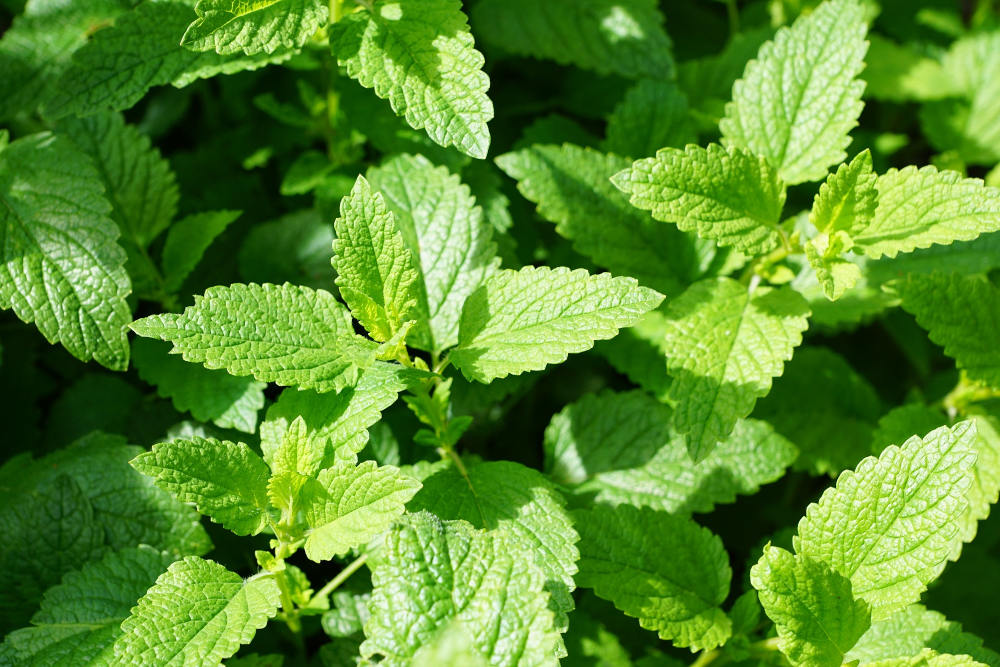
Fresh herbs like mint, basil, or rosemary can add a unique twist to your plain preserves.
For example, mint works wonders with strawberry jam, while rosemary pairs well with peach preserves.
-Spice it Up:
Kick your preserves by adding spices.

Cinnamon, nutmeg, or cloves can enhance the flavour of sweet preserves, while chilli flakes or cayenne pepper can add heat to pickles and chutneys.
Experiment with more exotic spices like star anise, cardamom, or turmeric.
They can transform an ordinary preserve into something extraordinary.
-Add a splash of alcohol:
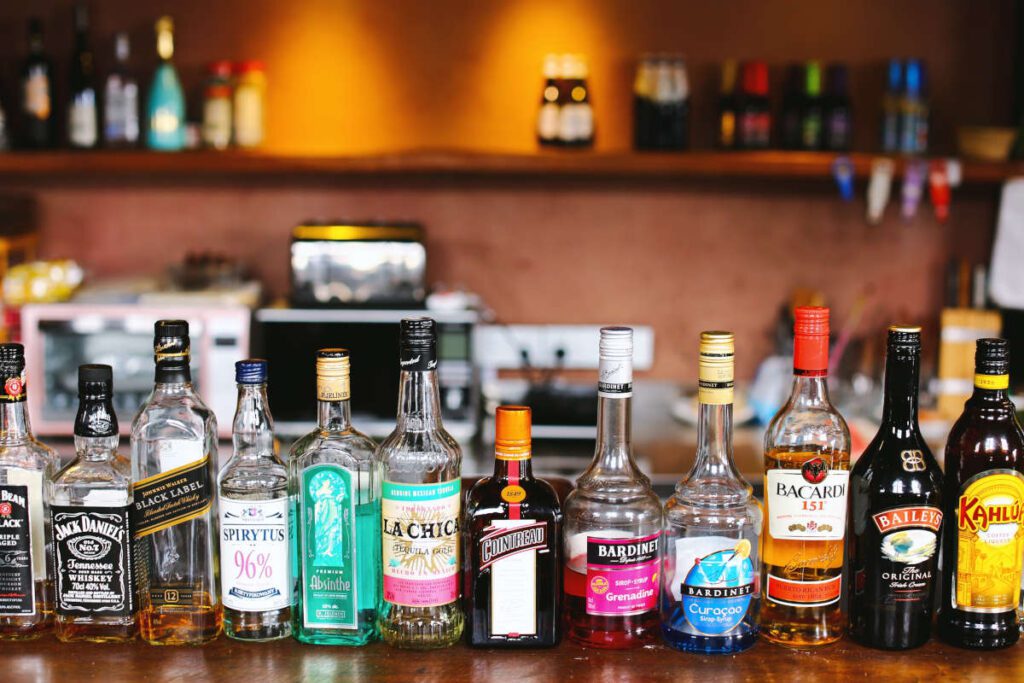
A bit of alcohol can greatly enhance the flavours in your preserves.
Consider adding a splash of bourbon or brandy to peach preserves or champagne to raspberry jam. The alcohol will cook off during the process, leaving behind a delicious depth of flavour.
For pickles or chutneys, try a dash of beer or white wine vinegar.
-Experiment with sweeteners:
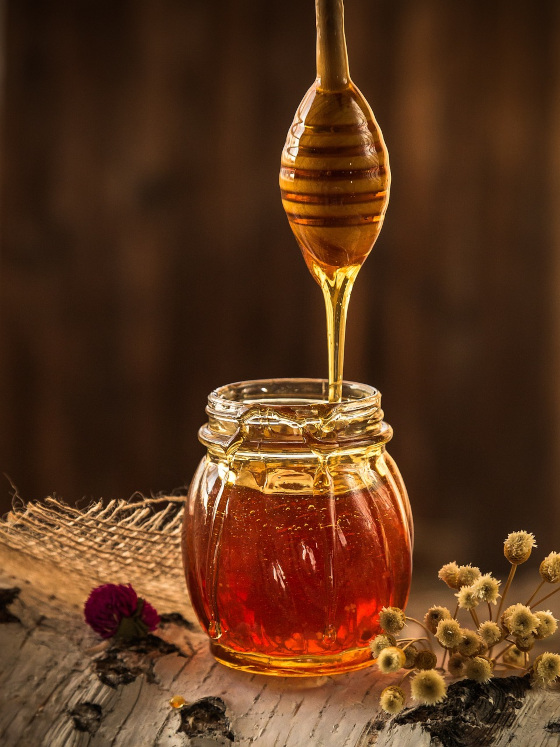
Instead of using regular granulated sugar, try experimenting with different sweeteners like honey, maple syrup, or agave nectar.
Each sweetener has its own unique flavour profile that can complement the fruit in your preserves. For instance, use honey in a blueberry preserve or maple syrup in a pear and walnut jam.
-Incorporate citrus:
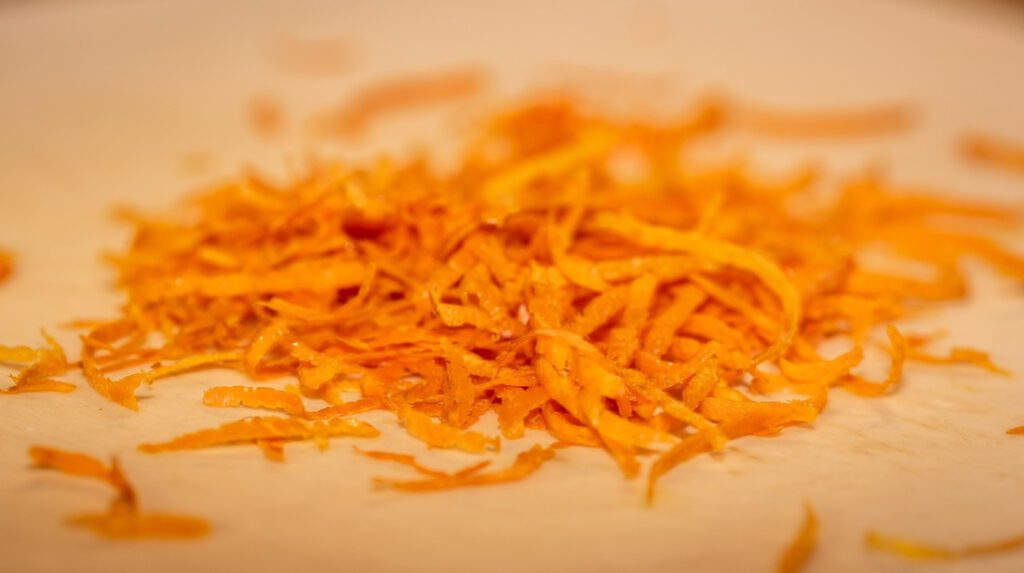
Adding citrus zest and/or juice can brighten up the flavours in your preserves and provide a refreshing tanginess.
For example, add orange zest to cranberry preserves or lemon juice to apricot jam. Just a small amount of citrus can make a significant difference in the overall taste.
-Blend in some heat:
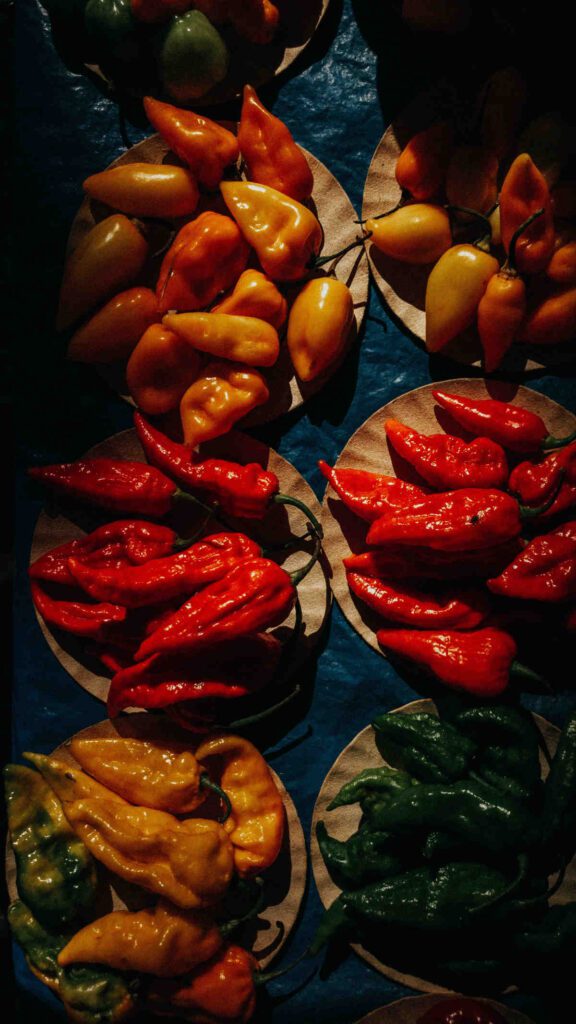
If you enjoy a touch of heat in your food, consider adding a spicy element to your preserves.
Introduce a little warmth by stirring in some crushed red pepper flakes, diced jalapeños, or chipotle peppers in adobo sauce. This works particularly well with fruits like mango, pineapple, and peach, creating a delightfully sweet and spicy combination.
-Go Nuts:
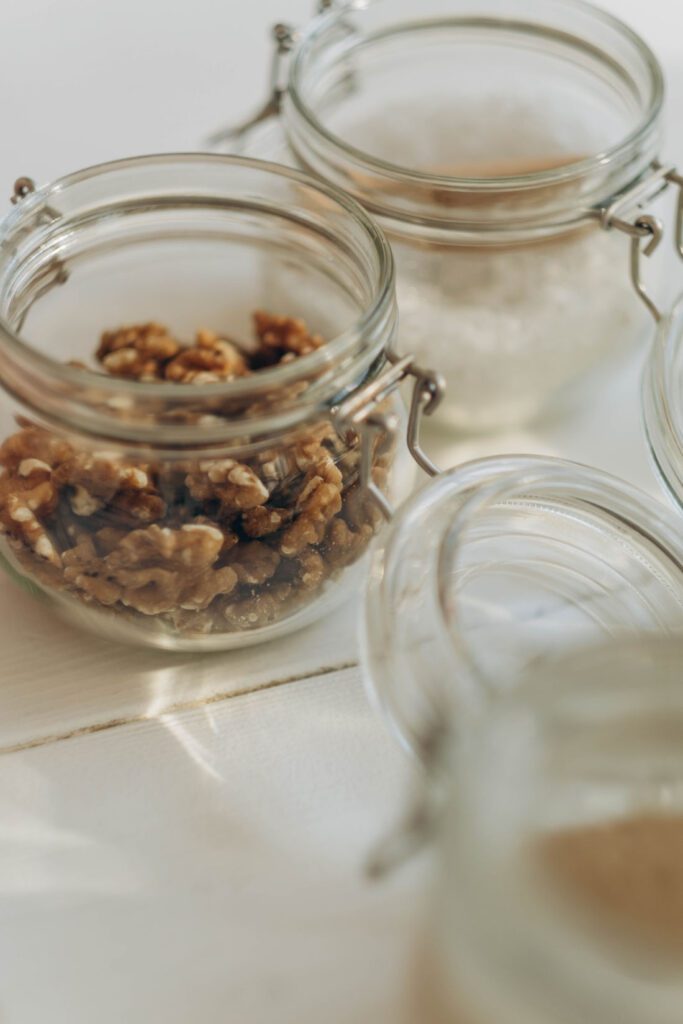
Adding toasted nuts like almonds, walnuts, or pecans can provide a delightful crunch to your preserves, enhancing their texture and taste.
They also add a delicious earthy nutty flavour especially in chutney.
-Add Dried Fruits:
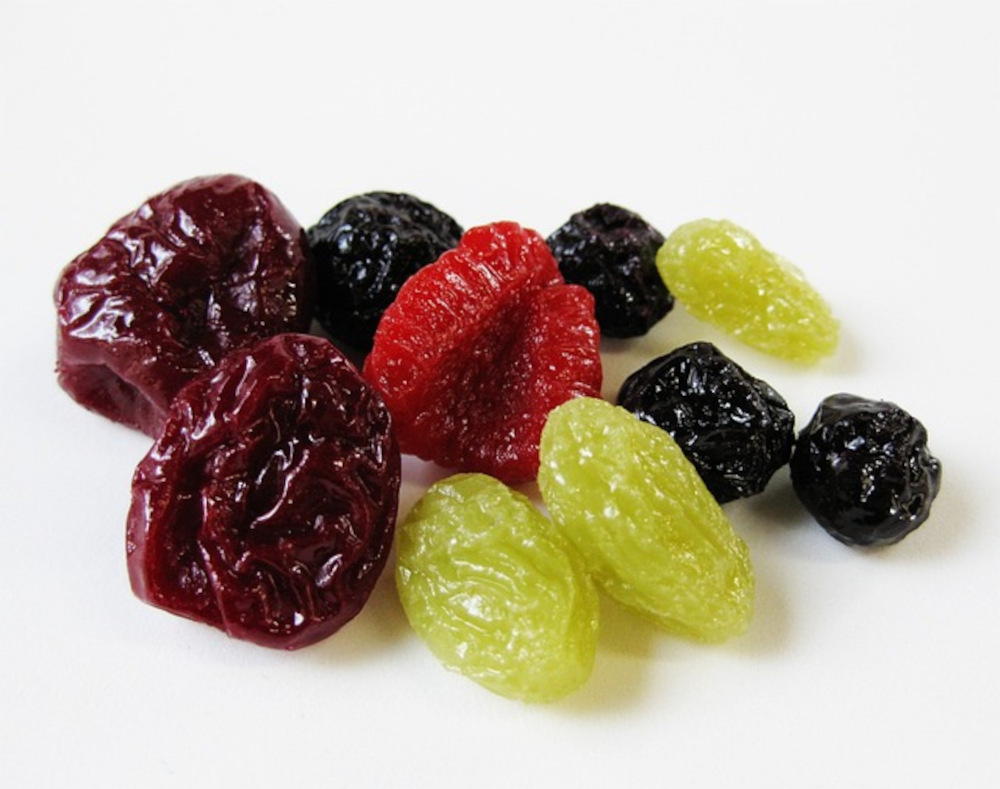
Chopped dates, raisins, or apricots can add a new dimension to your preserves, providing an unexpected chewy texture.
You could use either complementing flavour of dried fruit, or a contrasting one for an even more interesting result.
-Use Fresh Ginger:
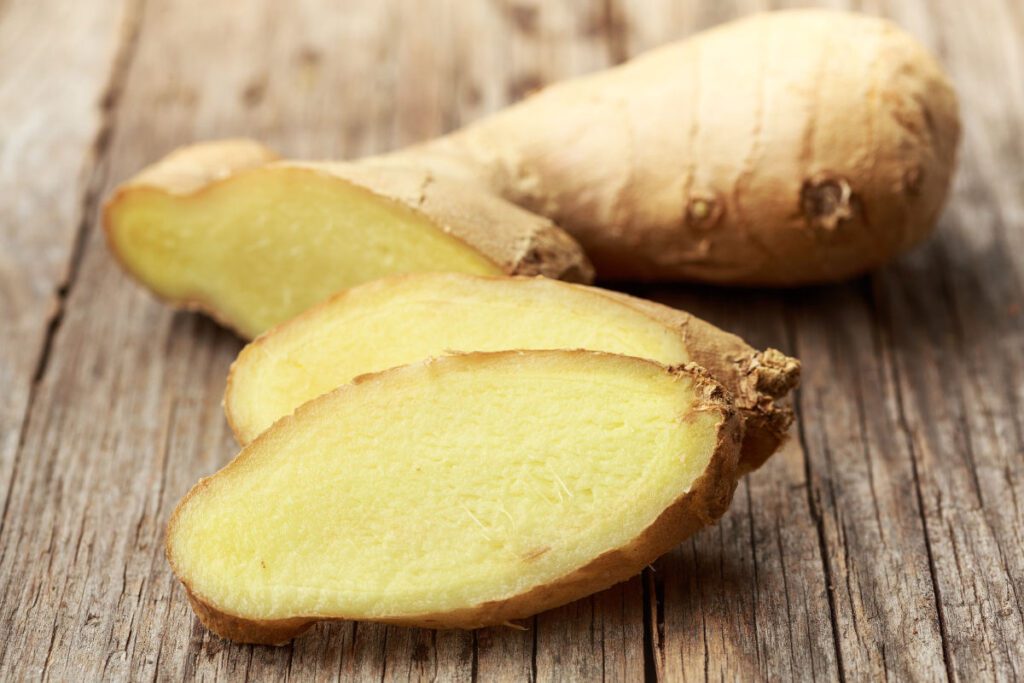
Freshly grated ginger can bring warmth and a vibrant zing to both sweet preserves, spicy chutneys, sauces or drinks.
Batons of fresh ginger is a different addition to a jar of pickles, adding heart and mild crunch.
-Mustard Seeds:
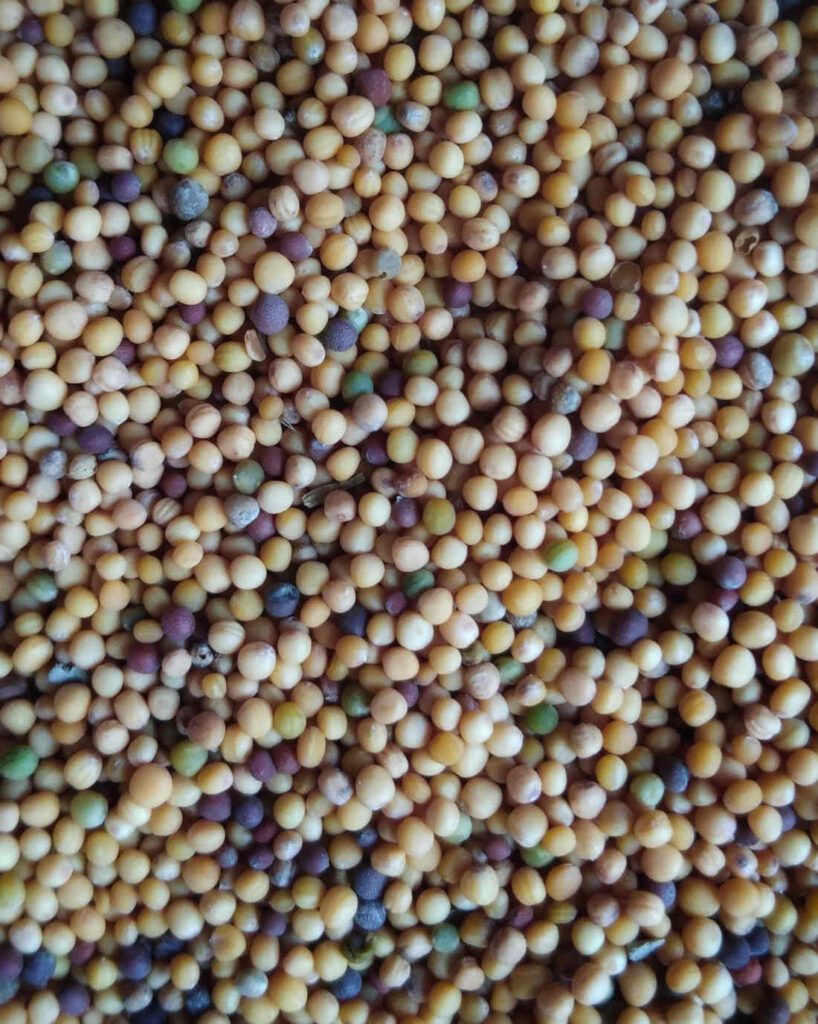
For pickles and chutneys, try adding mustard seeds.
They pop in your mouth, providing a burst of flavour and a unique texture.
-Roasted Garlic and other roasted fruits/vegetables:
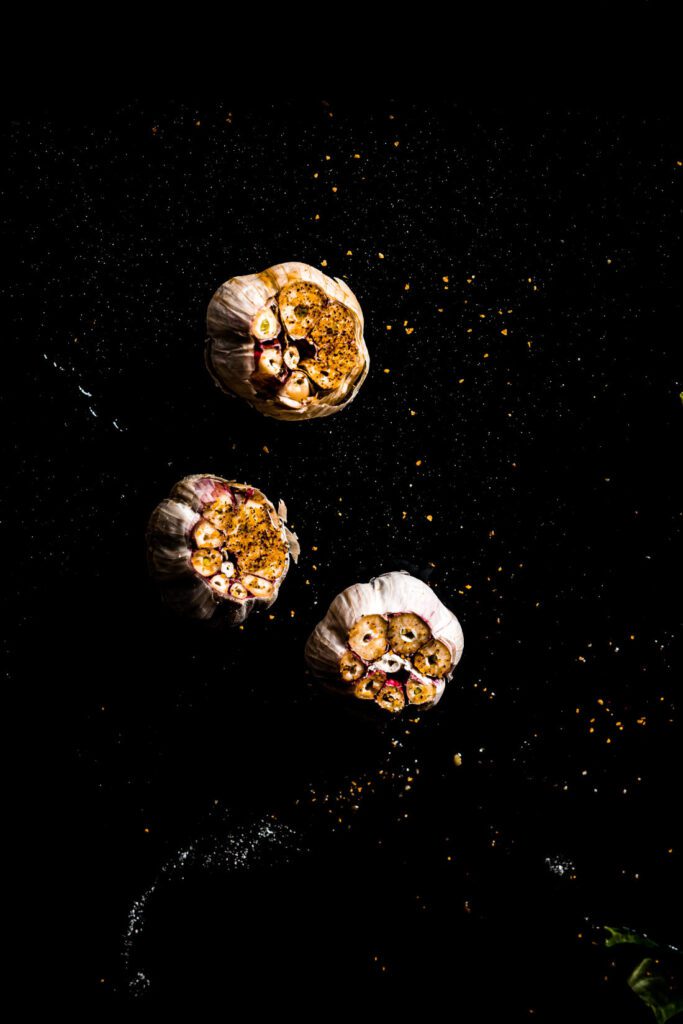
Roast a few cloves of garlic and mix them into your chutneys or savoury preserves for a rich, deep flavour that’s truly irresistible.
You can similarly add other roasted vegetables or fruits that complement the host preserve. Roasting intensifies their flavour and also softens them up ahead of mixing in.
Remember, the magic is in experimenting. Feel free to mix and match these suggestions until you find your perfect preserve upgrade. Happy days!
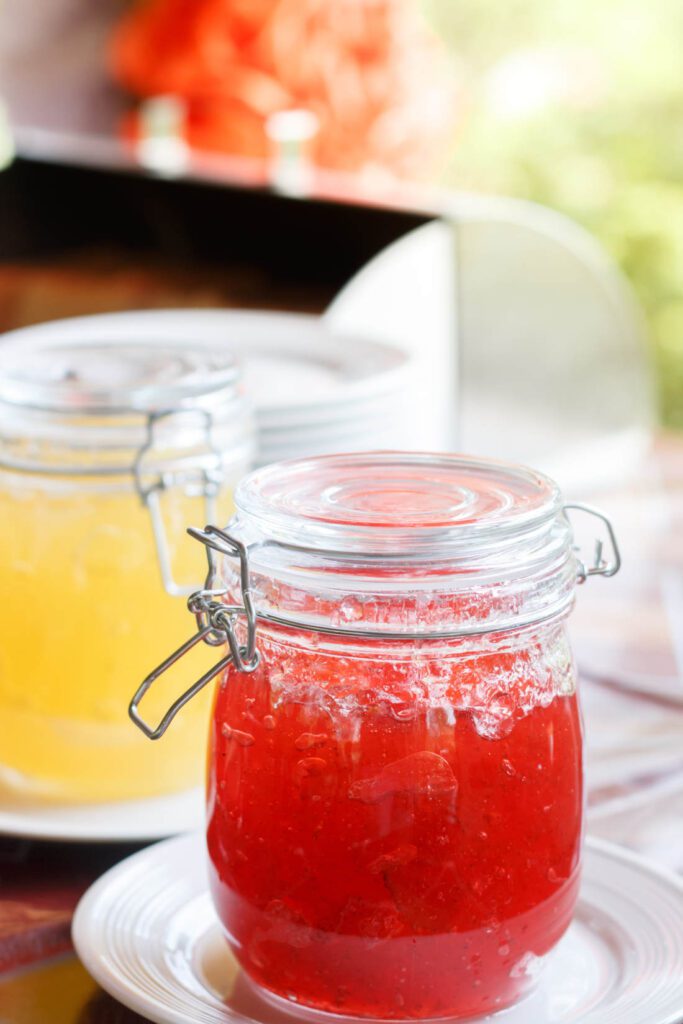
In conclusion, upcycling preserves not only benefits the environment by reducing waste and conserving resources but also fosters creativity and resourcefulness within ourselves. So, let’s continue to explore the endless upcycling possibilities that preserve can offer, transforming them into something beautiful, functional, or even a heartfelt gift for someone special.
Take another step towards incorporating the pleasure of preserves and preserving into your busy, modern life.
CLICK HERE TO GO TO: Upcycling Preserves Part 2: TOP TIPS